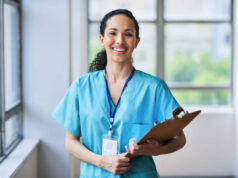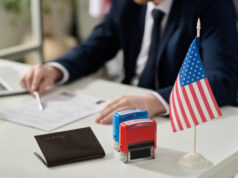In a world characterized by humanitarian crises, violence, and displacement, vulnerable individuals face tremendous obstacles!
There are channels in Canada, a country renowned for its kindness and dedication to human rights, for giving individuals in need safety and support.
However, navigating the humanitarian and refugee pathways may require a deep comprehension of the rules and regulations.
This article will inform you about seeking asylum or humanitarian assistance in Canada and also focus on the criteria for applying under Humanitarian and Compassionate (H&C) grounds and refugee cases.
How to Apply for Humanitarian and Compassionate Grounds?
To apply for the Humanitarian & Compassionate Grounds, the applicant must fill out an application consisting of numerous forms. If the applicant is already in Canada, they will have to fill out these forms:
- A general application for Canadian immigration. (IMM 0008)
- A form stating an applicant requests an exemption to the country based on Humanitarian & Compassionate Grounds. (IMM 5283)
If the applicant is outside Canada:
- Complete the application for one of the three immigration categories (economic, family, or refugee program).
- Give the necessary supporting paperwork. Enclosed is a letter of submission outlining their circumstances and stating your desire to apply for relief through Humanitarian & Compassionate Grounds.
- After paying the processing fee, they send in their finished application packet.
Immigration agents examine the material submitted in an H&C application assessment process to ascertain if a person’s circumstances warrant granting permanent residence in Canada under H&C laws.
How Long Does the Humanitarian and Compassionate Grounds Application Take?
The Humanitarian & Compassionate Grounds program has a drawn-out, complex application process. In Canada, applying for H&C can take two to three years. You may remain in the country while your application is being processed, provided no other applications are received.
Criteria for Applying under H&C Grounds
- Establishment in Canada: Candidates must exhibit a solid foundation in Canada, including duration of stay, family relationships, work history, interest in the community, education, training, and skill sets, as well as assets and savings in Canada.
- Risk of Hardship: It is essential to establish the existence of significant hardship if the applicant were to return to their home country. This could include persecution, danger to personal safety, or inability to access essential services.
- Best Interests of a Child: The children’s best interests are given special consideration. The applicant must demonstrate the impact that returning to the child’s country of origin would have on their well-being. A child’s emotional, social, cultural, and physical wellness are considered.
- Compelling Circumstances: Applicants must demonstrate compelling circumstances that justify granting an exemption to standard immigration rules. These circumstances could include serious health issues, family separation, or other humanitarian concerns.
What Happens if Your Application is Refused?
The majority of application denials occur domestically. The applicant has fifteen days to apply to the Federal Court of Canada for judicial review and leave. In addition, the visa office returns the application for re-determination if the review concludes in the applicant’s favor.
For How Long Is a Humanitarian Visa Valid?
A successful humanitarian application leads to permanent resident status. This requires the resident to reside in Canada for at least two years (with some exceptions).
Claiming Asylum in Canada
Requesting asylum in Canada involves presenting oneself at a port of entry, an inland Canada Border Services Agency (CBSA), or Immigration, Refugees, and Citizenship Canada (IRCC). The CBSA or IRCC agent will then decide whether or not this person can apply for asylum.
Those who apply for asylum must submit credible evidence of persecution in their home country and pass biometric, biographical, security, and criminal background investigations to be granted refugee status in Canada.
Refugee Sponsorship
Canadians, their communities, and organizations can sponsor refugees and assist them in resettling into their new lives in Canada in various ways.
Meanwhile, as refugees settle and adjust to life in Canada, these sponsorship programs help them find housing, offer monetary, social and emotional support, and provide food and clothing donations.
Under the Groups of Five private sponsorship program, one or more refugees may be sponsored by five or more Canadian citizens or permanent residents to settle in their community.
Only candidates with refugee status in Canada may be funded by these sponsors, who must be over 18. Furthermore, under the semi-private Blended Visa Office-Referred Program, private sponsors work with the Canadian government to sponsor a refugee identified by the United Nations Refugee Agency.
As a Sponsorship Agreement Holder, a Community Sponsor for applicants currently holding refugee status in Canada or through the Joint Assistance Sponsorship Program.
Organizations collaborate with the government of Canada to sponsor refugees with special needs, and corporations and organizations can also assist in the sponsorship of refugees.
Criteria for Applying as a Refugee
- Well-founded Fear of Persecution: To be granted refuge, applicants must demonstrate a legitimate fear of being persecuted due to their race, religion, nationality, political beliefs, or affiliation with a specific social group. Both subjective (the applicant truly fears persecution) and objective (there is a plausible chance of persecution) elements must be present in this fear.
- Unable or Unwilling to Seek Protection: Refugees must demonstrate that they are unable or unwilling to seek protection from their home country’s authorities due to the fear of persecution.
- Outside assistance Unavailable: Applicants must show they cannot seek protection from other sources, such as international organizations or neighboring countries.
- Non-refoulement Principle: Canada upholds the concept of non-refoulement, which forbids sending people to be deported to countries where they might be persecuted or harmed. As such, refugees have to prove there is a real risk to their safety if they return to their place of origin.
Appealing a Decision
If your asylum request is rejected, you must depart Canada and return home. However, after 15 days of obtaining the written judgment from the Refugee Protection Division, denied applicants may request to appeal this decision to the Immigration and Refugee Board of Canada’s Refugee Appeal Division (RAD).
After obtaining the formal denial decision, you will have thirty days to submit an appellant record. If an oral hearing is unnecessary, the RAD will decide on your appeal in 90 days.
Conclusion
The road to stability and permanent status in Canada is difficult for many immigrant families. Nonetheless, knowing the legal options—such as Humanitarian & Compassionate grounds—and getting professional counsel can help clarify the next steps.
It’s evidence of the determination and resolve of families trying to start over in a new country and find security and tranquility in a welcoming neighborhood.







